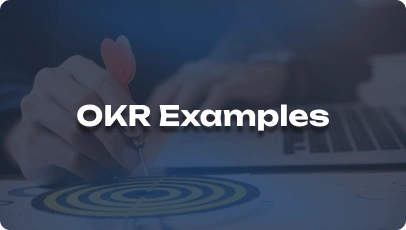3D Animator Job Description: A Complete Guide for HR Professionals
What does a 3D Animator do, and why is this role essential for your business? In today’s visually driven world, 3D animators play a vital role in bringing characters, objects, and environments to life across various industries, including entertainment, advertising, and gaming. A skilled 3D animator can take concepts and turn them into dynamic, eye-catching animations that captivate audiences and enhance brand messaging. For HR professionals, hiring a 3D animator requires an understanding of both the creative and technical aspects of the job to attract the right talent.
In this guide, we will break down the 3D Animator job description, including the skills required, key responsibilities, and how to structure a job posting that appeals to qualified candidates. Whether you are hiring for an animation studio or need to bolster your in-house creative team, this comprehensive guide will give you the tools you need to make an informed hiring decision.
What is a 3D Animator?
A 3D Animator creates animations, visual effects, and motion graphics for various mediums, such as films, video games, commercials, and virtual reality experiences. They use specialized software like Maya, Blender, and Cinema 4D to model, animate, and render 3D elements that are crucial to visual storytelling. 3D Animators work closely with directors, designers, and other creative professionals to ensure their animations meet the project’s aesthetic and technical goals.
Unlike 2D animation, 3D animation involves creating depth and movement in a three-dimensional space, requiring a strong understanding of spatial relationships, lighting, textures, and character rigging.
Key Responsibilities of a 3D Animator
A 3D Animator’s responsibilities can vary depending on the project and industry but generally include the following core tasks:
- Character Animation: Bring characters to life by creating realistic movements and expressions that align with the narrative or gameplay.
- Environment Creation: Design and animate backgrounds, landscapes, and environments that support the overall visual aesthetic of the project.
- Storyboarding: Collaborate with directors and creative teams to sketch storyboards that outline the sequence of animations and visual effects.
- Rigging and Modeling: Create 3D models and rigs that allow for movement and articulation, ensuring smooth and lifelike animation.
- Lighting and Texturing: Apply lighting techniques and textures to enhance the realism of the 3D models and animations.
- Rendering: Produce final animations by rendering the 3D models with appropriate lighting, shadows, and other effects to create a polished visual output.
- Review and Revise: Continuously refine animations based on feedback from clients or creative teams to ensure the final product aligns with project goals.
- Software Proficiency: Use 3D best animation software such as Maya, Blender, 3ds Max, and Cinema 4D to produce high-quality animations.
Take Your Team to the Next Level with Advanced HR Tools!
Streamline & Automate your HR Processes From Hire to Retire
Required Skills and Qualifications
Finding the right 3D Animator requires a combination of creative and technical expertise. Here are the skills and qualifications to look for in candidates:
1. Essential Skills
- Proficiency in 3D Animation Software: Experience with industry-standard tools such as Maya, Blender, or Cinema 4D is essential for creating high-quality animations.
- Creative and Artistic Vision: Strong understanding of design, movement, and storytelling to create compelling animations.
- Attention to Detail: Keen eye for details, including textures, lighting, and movement, to ensure animations look realistic and polished.
- Collaboration Skills: Ability to work effectively with directors, designers, and other team members to bring projects to life.
- Problem-Solving: Capability to troubleshoot technical issues related to animation software, rendering, or rigging.
2. Preferred Qualifications
- Education: A bachelor’s degree in Animation, Graphic Design, Fine Arts, or a related field is often preferred.
- Experience: 3-5 years of experience in 3D animation, preferably within the gaming, film, or advertising industries.
- Portfolio: A strong portfolio showcasing previous work in 3D animation, including characters, environments, and visual effects.
- Certifications: Certifications in animation software such as Maya, Blender, or other relevant platforms can be a plus.
3. Personal Attributes
- Creativity: A passion for visual storytelling and an ability to think outside the box when designing animations.
- Adaptability: Ability to pivot and adjust animations based on client or director feedback quickly.
- Resilience: The animation process can be time-consuming and iterative, so resilience and patience are key attributes.
Salary Expectations and Career Growth
Understanding the salary range and career trajectory for a 3D Animator is crucial for attracting top talent.
1. Salary Expectations
- Average Salary: The average salary for a 3D Animator ranges from $55,000 to $90,000 per year, depending on experience, location, and industry.
- Location: Salaries tend to be higher in major creative hubs such as Los Angeles, New York, and Vancouver due to the high demand for skilled animators.
- Experience: Entry-level animators may start around $55,000, while seasoned professionals can earn upwards of $90,000.
- Industry: The film, gaming, and advertising industries typically offer higher salaries for 3D animators due to the specialized skills required.
2. Career Growth Opportunities
- Animator to Lead Animator: After gaining experience, animators can move into leadership roles, overseeing animation teams and larger projects.
- Specialization: Some animators choose to specialize in specific areas, such as character animation, VFX, or environmental design.
- Transition to Creative Director: Many animators move into broader creative roles, leveraging their storytelling and design skills to oversee entire projects or departments.
- Freelancing or Consulting: Experienced animators may choose to work as freelancers or consultants, offering their skills on a project basis to multiple clients.
3. Skills That Drive Career Growth
- Advanced Animation Techniques: Mastering complex animation skills, such as character rigging or fluid simulations, can set an animator apart from the competition.
- Leadership and Collaboration: Gaining experience in leading animation teams and working cross-functionally can be a stepping stone to higher-level roles.
- Continuous Learning: Staying updated with the latest software and techniques in 3D animation is crucial for career advancement.
How to Write an Effective Job Description for a 3D Animator
Crafting a job description that resonates with top talent is essential. Here’s how to structure your job post:
1. Start with a Clear Job Title
- Specific and Informative: Use titles like “3D Animator,” “Senior 3D Animator,” or “3D Motion Graphics Specialist” to attract the right candidates.
- Level of Experience: If hiring for an entry-level or senior role, specify that in the job title.
2. Write a Concise Role Summary
In the opening paragraph, give a brief overview of the company, the role, and what the candidate will be doing. This should excite candidates about the position and provide context for the rest of the job description.
3. Include Key Responsibilities
Use bullet points to outline the main tasks the 3D Animator will be responsible for. Be specific but concise, ensuring candidates know what the day-to-day role entails.
4. List Required and Preferred Qualifications
Highlight the skills, education, and experience that are must-haves, followed by preferred qualifications that could set candidates apart.
Conclusion
Hiring a skilled 3D Animator can significantly impact your project’s success, whether you’re in gaming, film, or advertising. By crafting a clear, targeted job description and understanding the essential skills and qualifications, you can attract top-tier talent and create compelling, visually stunning content.






